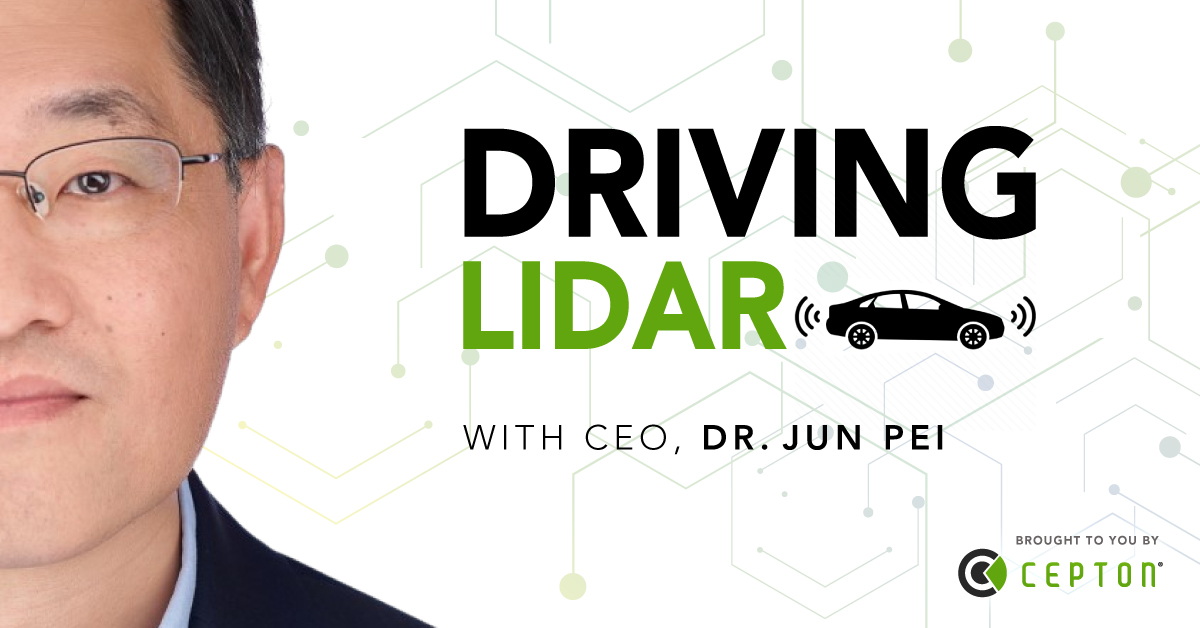The U.S. Department of Transportation has recently marked October the National Pedestrian Safety Month. As we celebrate the benefits of walking within our communities, we need to take proactive safety measures to ensure a safer environment, which essentially means safer roads and safer vehicles.
In 2020, an average of 18 pedestrians were killed each day in the U.S. This is indeed an alarming figure, and often times, it’s too late to realize the importance of safe driving after a life has been lost. Traffic accidents, regardless of their severity, can be traumatizing, and should therefore be prevented at all costs.
In today’s post, instead of sharing my own thoughts, I’d like to share an email that I received a few months ago from Emily Frisbie, a former intern at Cepton. With her permission and through her lens, I’d like to show you the impact of even a minor car accident, and why we need better technology in our cars.
--
Dear Dr. Pei,
My name is Emily Frisbie. I just completed my internship program at Cepton this past spring and am writing to thank you for the opportunity. I also wanted to share with you an experience that I had during the internship as well as my learnings from it.
Before I came to Cepton, my only knowledge of lidar came from news about the iPhone 12. As I took on the internship and started learning about the company, I was introduced to lidar’s automotive applications, such as ADAS and autonomous driving.
In the first week of my internship, I was doing some research about vehicle and train crash statistics, when I learned that the average driver will likely be involved in a car accident by the age of 34, and will be involved in roughly 3 to 4 accidents throughout their lifetime. Being in my early twenties, and considering myself a responsible driver, I did not find that particularly relatable.

Little did I know that I would soon be given a chance to experience it firsthand. A month into the internship my car was hit head-on while I was stopped at an intersection waiting to turn. Everything happened so fast it did not scare me right on the spot. It was the thought of what could have happened that ended up haunting me – I was not by myself; my grandma was in the car too. Luckily, we made it out okay, but what if things turned out differently? I could not help thinking about the many what ifs and asking myself if I should still trust everyone on the road. It was simply traumatizing.
Immediately after the car accident, my grandma and I went to the hospital. It was a lot of stress and guilt to deal with trying to picture how the rest of our family were sitting in a hospital room down the hall, worrying about us. After that we ended up going through months of physical therapy, because even though we looked externally fine, we turned out to have some internal issues with whiplash and spinal misalignments from the impact of a head-on collision.
Meanwhile, I had to deal with the insurance company, which I am sure you would agree is not a fun experience. I lost my first car – a 2017 Toyota Corolla – in this accident, but going through the hassles of getting my compensations and finding a vehicle to drive left me with little time to mourn the loss.
The experience left me thinking: how can one really drive safe? Growing up I learned that being a safe driver meant being focused and watching out for other drivers on the road too. While this still rings true, how others drive is simply beyond my control yet poses so many unpredictable risks.
What’s worse, in many cases, we as drivers are not even distracted by choice. Everything in the environment can distract us and affect our ability to drive. And even with our eyes on the road and hands on the wheel, there are always going to be blind spots and lags between actions.
During my internship at Cepton, I learned that lidar is more proactive as a safety sensor than some of the other technologies. Based on what I learned, lidar “sees” the unseen, and flags many risks before they become life-threatening. I have seen some people argue that lidar is only useful in corner cases. But from my perspective, no one’s life deserves to be a corner case. The sensor redundancy that you have been advocating has now become easy to comprehend.
My experience also taught me that a consumer will always want a safer car, no matter how incremental the improvement may seem. When I learned that Cepton was founded through observing the market gap in the automotive industry for an affordable, reliable lidar for everyday cars, I felt seen and heard as a consumer, driver and passenger. My hope for the future is that I get to drive a car with lidar in it, and I believe the wait won’t be too long.
I am grateful for what Cepton is doing to help improve safety in consumer vehicles, and I am proud to have been part of the efforts. Thank you, Dr. Pei!
Best regards,
Emily
--
I’d like to thank Emily for sharing her perspective and for her work as an intern with Cepton. Automotive safety features and sensor technologies have come a long way, but even the most cautious drivers are still at risk of experiencing a collision. We can never do too much to prevent and mitigate the severity of an accident, which is why I believe lidar has a place in today’s vehicles.









